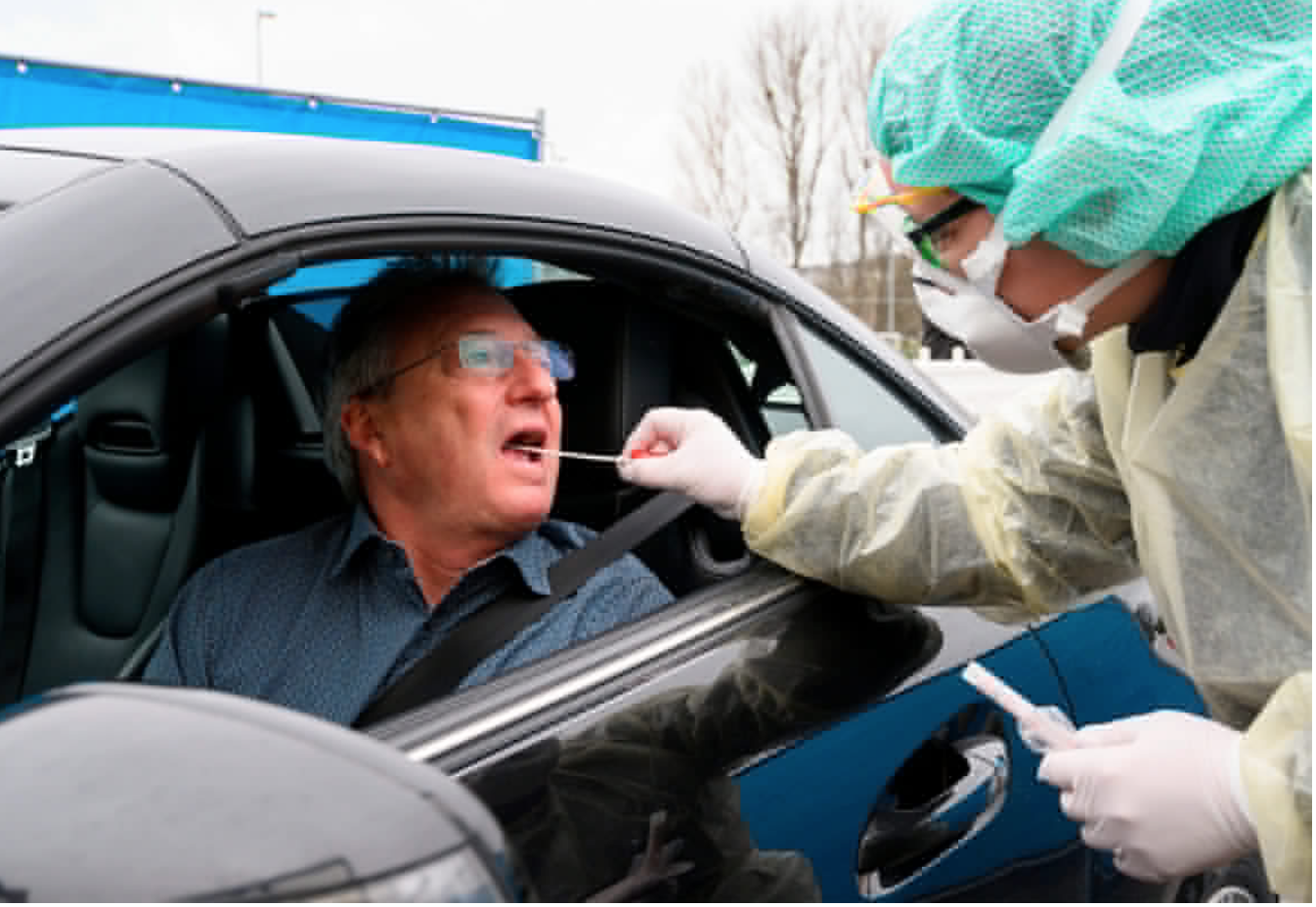Test kits have been in short supply, but let’s imagine that we have all the test kits that are needed so supply is not a problem. If you want to be tested because you have one of the symptoms or came into direct contact or secondary or tertiary contact with someone who had it, would you want to go into a hospital waiting room or a doctor’s office? I wouldn’t want to be around other people who are sick or possibly have the virus. After all, social distancing is one of the safe things to do. And there’s no room for social distancing in a doctor’s office or waiting room in urgent care or a hospital.

So how do you get tested without exposing yourself or others to a potentially infected person? The South Koreans developed a way around this sticky problem from their previous experience with SARS. It’s a drive-thru test. People who want to be tested drive to a location and get in a drive-thru line like a fast-food place. Drivers and their passengers go through the the entire testing process in five minutes without ever leaving their cars. They wait in their car in line. When they get to the window, they are swabbed (the test), then they drive off. They are contacted with the results of the test and further instructions by text, phone or email.
It’s a simple solution and allows them to test hundreds of people a day. The drive-thru method has proven to be more a more efficient testing method, in addition to limiting human interaction with potentially infected people and further preventing the spread of the virus. Another bonus is that patients are not able to contaminate a public health facility. (Some hospitals have set up temporary tents to perform screening outside of the main buildings.)
While the coronavirus is causing a lot of disruption, it has also caused people to be innovative and find better ways to do things. The first drive-thru testing in the U.S. opened in Washington, but it is limited to first responders, healthcare workers, long-term care employee facility employees and symptomatic patients at the University of Washington Medical Center. As more test kits become available, more drive-thrus may open to handle the mass testing requests, but that decision is made by regional healthcare officials in concert with local facilities.
The next time there is an epidemic or pandemic (and there will definitely be a next time), we should be prepared to implement innovations from the past and create new ones. That is clearly a benefit of disruption.


Leave A Comment
You must be logged in to post a comment.